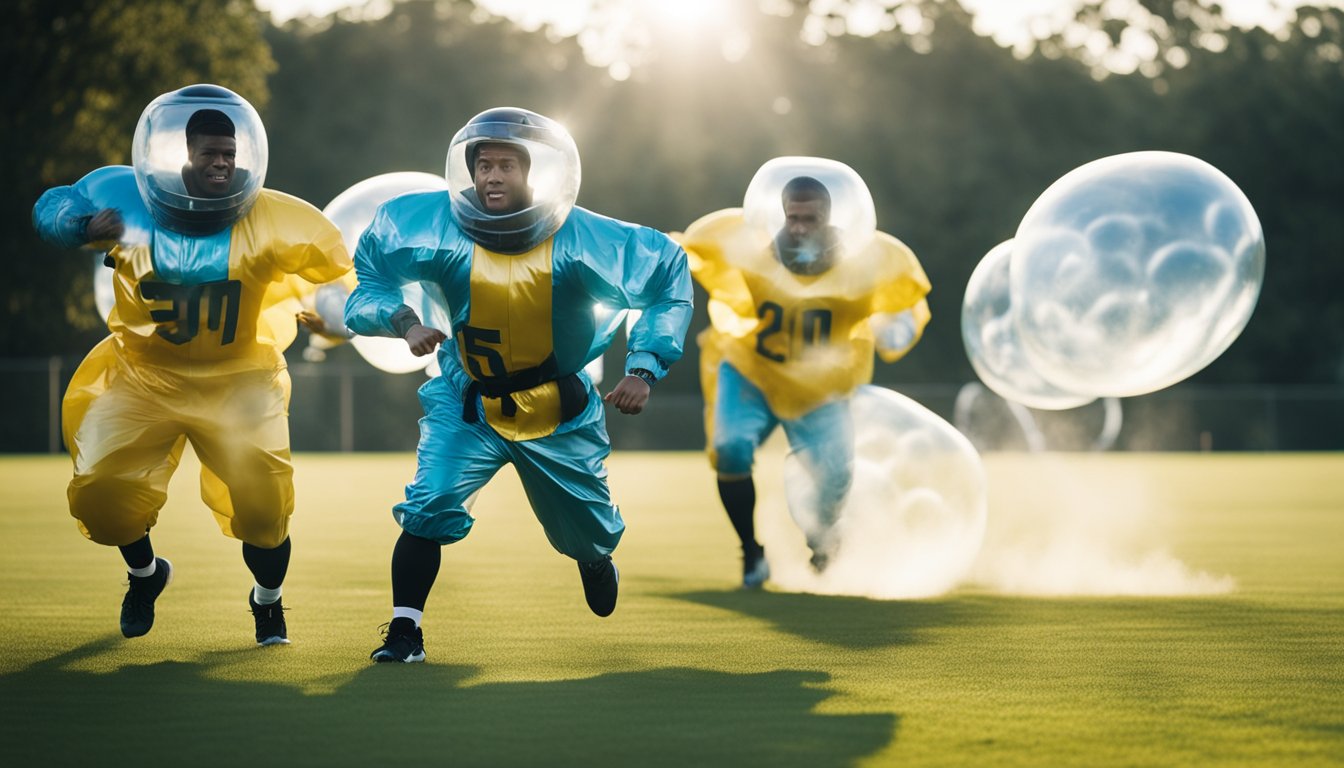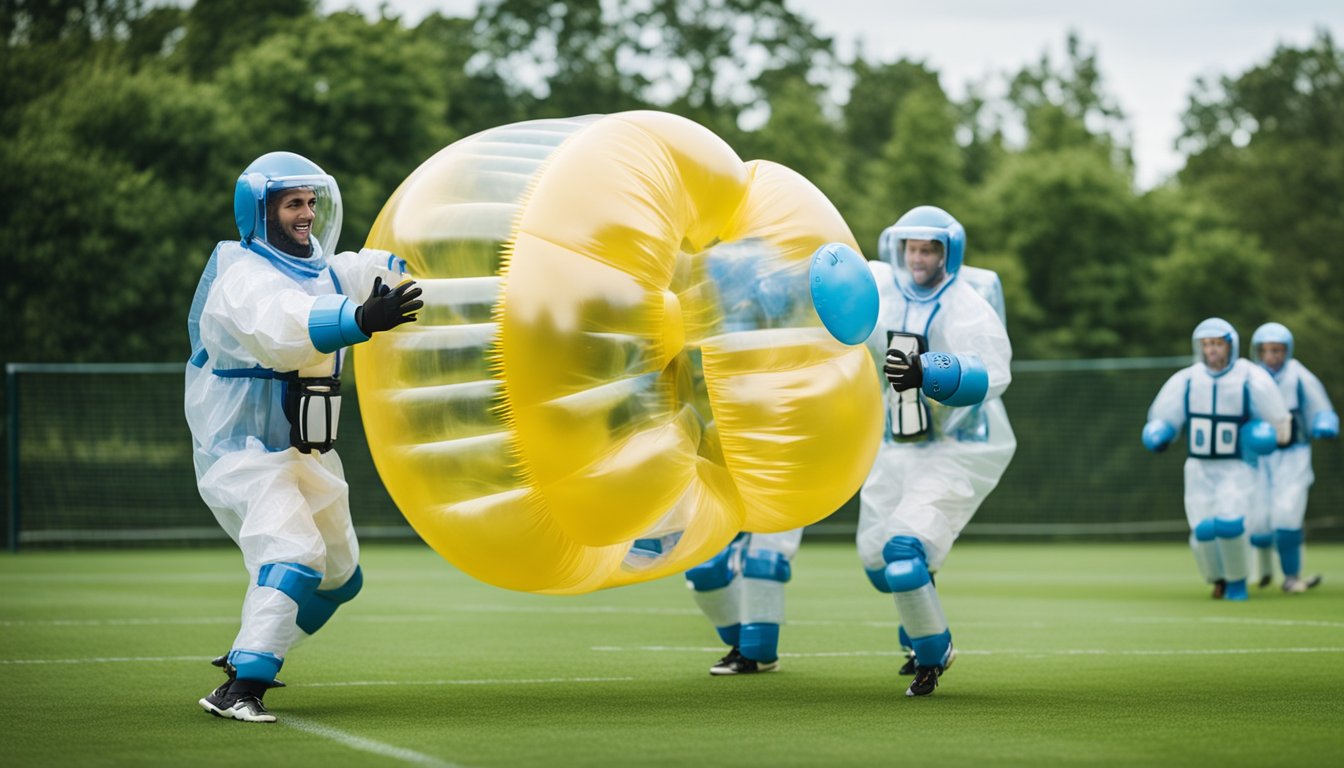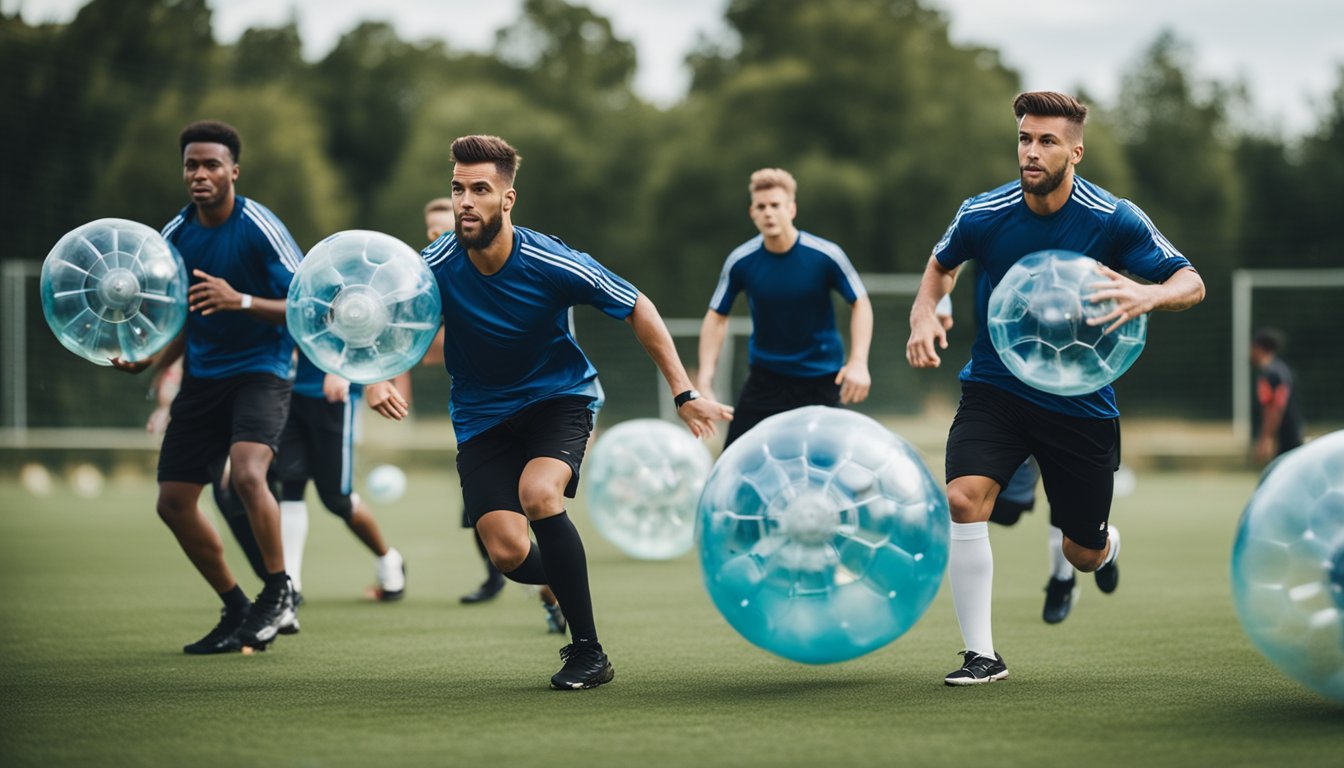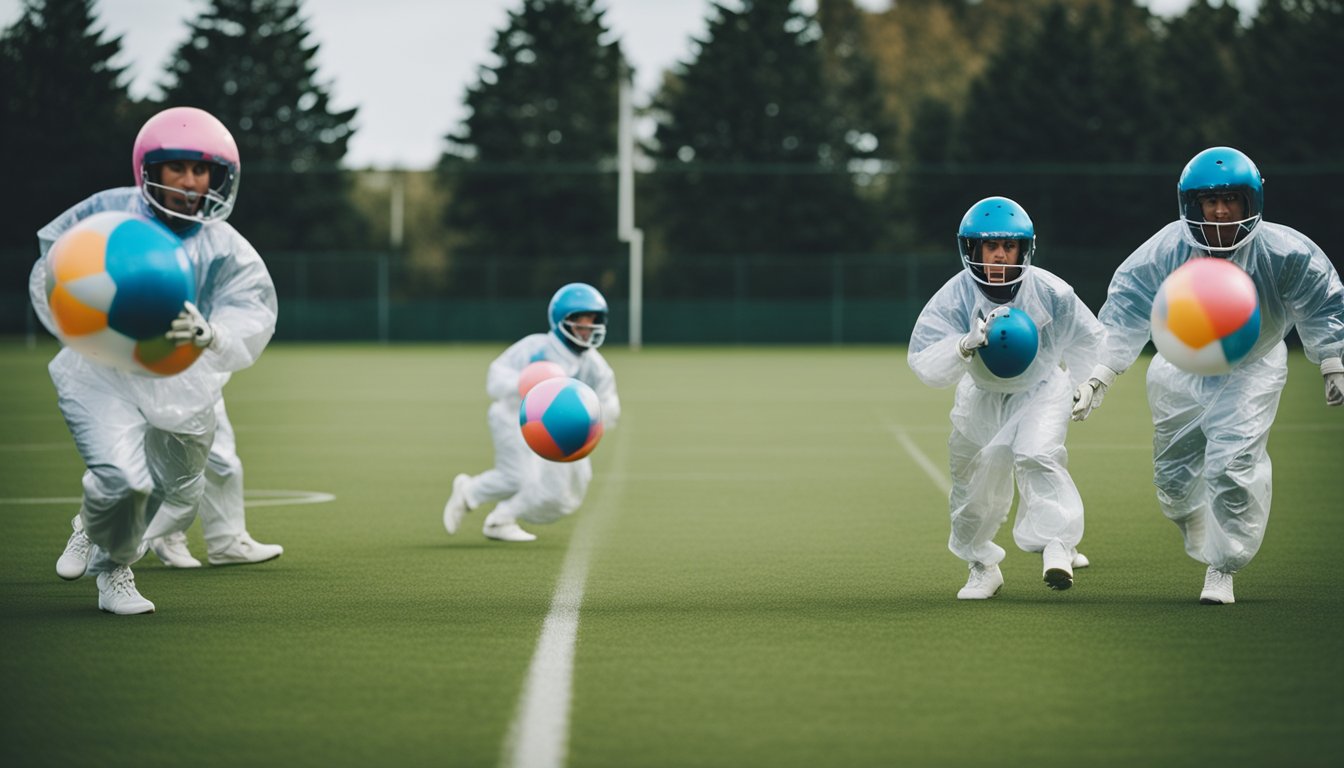Late updated: 18 Nov 2024 13:11
Written by: Emma Saunders
Ultimate Guide To Bubble Football Fitness Routines: Enhance Your Training
Bubble football, a thrilling and energetic blend of traditional football and fun-filled antics, has taken the sports world by storm. Wearing giant inflatable bubbles, also known as zorbs, players experience a unique twist on the classic game. To excel in bubble football, fitness routines need to enhance agility, speed, and overall physical endurance. These routines not only improve performance on the field but also ensure safety while manoeuvring in the inflatable armour.

Our guide dives into the essentials of training for bubble soccer, covering everything from core exercises to advanced techniques that elevate performance and enjoyment. Special focus is placed on exercises that build strength and stamina, crucial for those intense bubble football games. Whether it’s learning the rules or mastering balance in the giant inflatable backpack, our comprehensive approach ensures that you are ready to tackle any challenge.
We understand that bubble football can be as unpredictable as it is exciting. Our blog post, therefore, offers insights and tips on how to train effectively for this dynamic sport, helping players prepare physically and strategically. From fitness routines that cater to beginners to those aiming for advanced skill levels, we have something for everyone keen to improve their game.
Key Takeaways
- Enhance agility, speed, and endurance for bubble football.
- Learn exercises that build strength safely within inflatable bubbles.
- Prepare with training routines for both new and advanced players.
Essentials of Bubble Football Fitness

Engaging in bubble football fitness requires a focus on core strength, stability, and sports-specific exercises that enhance overall performance. Additionally, high-intensity cardio routines are crucial for maintaining endurance and agility throughout the game.
Building Core Strength and Stability
Core strength is vital in bubble football, as it impacts our balance and ability to manoeuvre in the bubble suit. We should prioritise exercises such as planks and Russian twists to improve core stability. Additionally, incorporating exercises like single-leg balance drills can significantly reduce the risk of injury by enhancing our balance.
It's helpful to include methods like resistance training using stability balls or bosu balls. This can enhance both strength and flexibility, allowing us to remain agile on the field. Flexibility is equally important, as it aids our ability to absorb impacts effectively while playing.
Developing Football-Specific Strength
In bubble football, developing absolute strength is crucial for executing powerful moves. Using resistance training, we can focus on exercises that build both upper and lower body strength. Squats, lunges, and deadlifts are effective in boosting leg strength, while push-ups and pull-ups enhance upper body power.
We also need to integrate exercises that mimic in-game movements. Drills such as lateral lunges with a medicine ball can enhance our ability to manoeuvre swiftly on the pitch. Increasing strength for quick sprints and sudden stops will be beneficial, thus improving our overall performance during the game.
Cardio and High-Intensity Interval Training
Cardio training is fundamental for maintaining high energy levels and endurance. High-Intensity Interval Training (HIIT) offers an efficient method to build cardiovascular endurance. We should incorporate a mix of short, intense bursts like sprinting, followed by moderate activity, such as jogging or cycling.
Cycling can be especially beneficial for heart health and leg endurance without putting undue stress on the joints. HIIT not only boosts endurance but also aids in rapid recovery, which is crucial for the physical demands of bubble football. Implementing varied cardio routines ensures that we can sustain energy throughout a match, allowing for more effective and enjoyable play.
Advanced Training Techniques for Performance Enhancement

In advancing our football fitness routines, focusing on targeted resistance exercises, dynamic warmups, and strategic transitions from off-season to pre-season are essential. Each complements the others, ensuring comprehensive development and readiness.
Targeted Resistance Exercises
Utilising resistance exercises tailored for football training can significantly boost performance. Exercises like bench press, dumbbell lunges, and squats target key muscle groups used in shooting and passing. Emphasis on compound lifts such as deadlifts and front squats enhances core strength and stability.
Including the plank and face pulls caters to core and shoulder strength, critical for endurance. Our training should carefully balance load and technique to prevent injury. This blend of exercises bolsters power and agility, opening pathways for football players to execute explosive moves seamlessly.
Dynamic Warmup and Plyometrics
A dynamic warmup readies our bodies, elevating heart rates and preparing muscles for exertion. Incorporating plyometric exercises such as box jumps boosts leg power and explosiveness. Agility drills, like ladder runs, improve footwork critical for outmanoeuvring opponents on the field.
In our routine, exercises involving rapid movements crucial for nimbleness and speed are prioritised. Dynamic stretches combined with plyometrics form a robust foundation, cultivating agility and preventing injury by ensuring muscles are accurately primed for high-impact activity.
Off-Season to Pre-Season Transition Strategies
Transitioning from off-season to pre-season involves strategic adjustments to maintain optimal performance levels. In this phase, focusing on a structured training programme is vital, incorporating both skill and fitness elements. Emphasising gradual intensity increases allows us to safely scale workloads.
Specific football drills, including shooting and passing sequences, are integrated to regain technical proficiency. This period offers a chance to address previous weaknesses with targeted exercises. By closely monitoring progress and adjusting regimens accordingly, our team enters the pre-season with renewed vigour and competitive edge.
Frequently Asked Questions

In bubble football, understanding safety measures, equipment needs, and rule basics are crucial. We also explore how bubble football benefits fitness levels and the importance of effective warm-up exercises.
What is the maximum weight limit for participating in bubble football?
The weight limit often depends on the specific equipment used, but generally, the maximum is around 100 to 120 kilograms. This ensures the bubble can adequately protect the player from impacts.
Which equipment is essential to play bubble football safely?
The primary piece of equipment is the inflatable bubble suit, also known as a zorb. Players should also wear comfortable sports attire and trainers. Knee pads and elbow guards can offer extra protection.
How does one ensure safety while playing bubble football?
Safety involves proper use of equipment, adhering to rules, and ensuring each bubble is correctly inflated. Supervision by trained personnel can further enhance safety. Players should also avoid aggressive play that might lead to injury.
What are the basic rules for playing bubble football?
Bubble football shares similarities with traditional football, focusing on getting the ball into the opposing team's goal. Key differences include rules around staying on your feet and no launching of bubbles aggressively at one another.
How can bubble football contribute to physical fitness?
This sport is a fun way to improve cardiovascular fitness, muscle strength, and endurance. The dynamic movements involved provide a full-body workout, enhancing coordination and balance.
What are some effective warm-up exercises for bubble football players?
Dynamic stretches, such as leg swings and arm circles, help prepare the body for activity. Incorporating drills like light jogging can increase heart rate gradually. These activities can reduce the risk of injury and improve performance.
